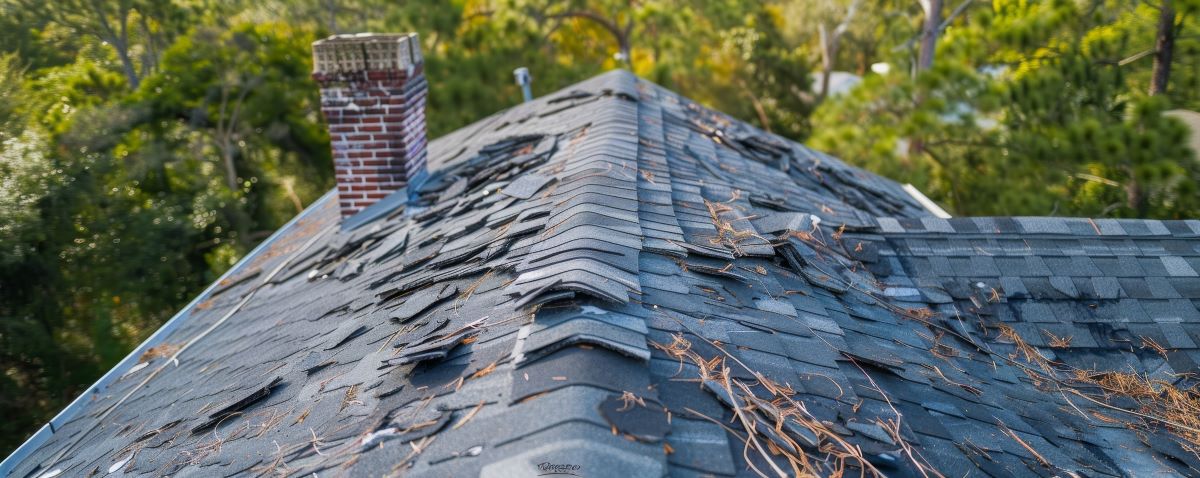Cosmetic damage refers to damage that allegedly affects only the appearance of a property but doesn’t impact its function. There is a growing trend among insurers to attempt to exclude this type of damage from coverage in insurance policies, leaving policyholders to pay out of pocket for repairs — particularly in instances of roof and siding damages from hail.
Even minor damage can affect the value of a property, and homeowners associations (HOAs) may, on some occasions, require repairs regardless of functionality, forcing the homeowner to either seek coverage from their insurer or shoulder the entire cost of repairs themselves.
What Are the Different Types of Cosmetic Damage?
Typical types of damage that are often considered cosmetic include dents, scuffs, scratches, chipping, marring, pitting, warping, rusting, staining, fading, and other forms of discoloration. Some typical examples would include:
- Dents or pitting in the shingles of a roof
- Scuffed, scratched, and chipped siding on a house
- Stained or faded paint
- Scratches on windows
What Is The Difference Between Cosmetic and Structural Damage?
Structural damage (or, as it’s also called, “functional” damage) is damage that compromises a house’s stability, safety, or ability to withstand the elements. Some examples would include:
- Warped or rotted support beams
- Water damage that has led to mold growth
- Active leaks in the roof
- Cracks in the foundation
- A sagging roof or ceiling
Does Homeowners Insurance Cover Cosmetic Damage?
Property insurance policies cover physical damage to property. Cosmetic damage has traditionally been paid if the damage is greater than the deductible. Obviously, the value of a home involves more than whether it’s simply “functional,” and if your home has sustained any kind of damage, that damage affects your property’s value, even if an adjuster claims it’s simply “cosmetic.”
Lately, however, some insurance companies have started using exclusions for “cosmetic damage” to get out of paying for certain kinds of damage, particularly to roofs and siding.
Several years ago, I filed an amicus brief on behalf of United Policyholders regarding the issue that cosmetic damage still constitutes physical damage covered under an insurance policy. In my brief, I noted what was then a fairly recent FC&S Bulletin confirming that cosmetic damage is physical damage covered under the policy:
Question: Hailstones have created dents to a copper roof. The section of roofing is located over a second story bay window. It does not appear that the hail has compromised the lifespan of the roof’s surface or otherwise affected or decreased its useful lifespan.
Our HO policy provides coverage for direct physical loss. If the roof’s integrity was not compromised by the hail stone impact, has a physical loss occurred?
We believe that some carriers view this type of damage as cosmetic and do not provide coverage for replacement of copper roof. Does FC & S have an opinion?
[Answer:] Whether or not the dents are cosmetic or affect the roof structure, they are still direct physical loss. The policy doesn’t define damage so standard practice is to go to a desk reference. Merriam Webster online defines damage as loss or harm resulting from injury to property, person, or reputation. The roof now has dents where it didn’t before; that’s direct damage. The policy doesn’t exclude cosmetic damage, so direct damage, even if it is cosmetic, is covered. It’s the same as if vandals had painted the side of the house purple. While cosmetic, it’s damage, and is covered. The principle of indemnity is to restore the insured to what they had before the loss, and this insured had a roof with no dents.
As insurance companies contrive ever more complicated ways to deny coverage to homeowners, it’s critical to read your policy carefully and have it reviewed by a lawyer in order to understand the ins and outs of your coverage.
Further Resources on Insurance Coverage Law
Navigating the complexities of insurance claims can feel overwhelming. Whether you’re facing unpaid claims or simply filing for the first time, our eBooks equip you with the crucial information you need to advocate for yourself with confidence.
- Filing A Property Insurance Claim
- Insurance Company Response Time
- What To Do When You Have a Denied/Underpaid Claim
- Wildfire Claims
- Flood Claims Handbook
- More Information on Hurricane Deductible and Policy Limits
- Condominium Hurricane Preparedness
Why Merlin?
Are you fighting an insurance company that won’t pay up on claims? With nearly 40 years of practice and $2 billion in recovered claims, our team stands by your side to ensure you can face any insurance challenge with confidence. Contact us today for a consultation, or read more about how we’re your trusted advocate.




